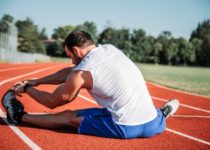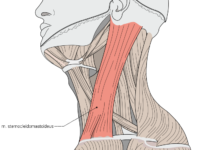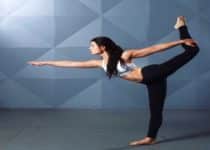Do Posture Correctors Work? - The Truth
Especially back braces have been getting more and more popular during the past years. Some coming at very high costs above 200$ while others are quite inexpensive & can be found on amazon.
But can you actually fix posture problems by simply adding a device to your back & neck? Are the results that you get going to last for a long time or is it in reality just a way for the fitness industry to make money?
Here you are going to find all the facts & answers that you need if you don't know if you should try a posture corrector or not.
What Is A Posture Corrector?
Before discussing if posture correctors are the right choice for you I wanted to cover the question of what a posture corrector actually is.
In a broad sense, a posture corrector is a physical device that helps you to maintain the right posture, while sitting or standing.
But since there are many places where problems with posture can occur (Head & Neck, Lower Back, Hips etc), there are quite a lot of types of posture correctors.
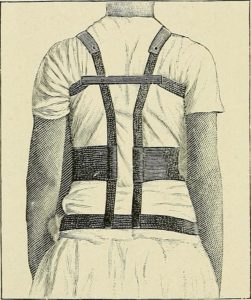
What Types Of Posture Correctors Exist?
Speaking of types the ones listed below are by far the most common;
- Posture Braces (lower & upper back)
- Kinesiology Tape
- Sitting Support Devices (Ball Chairs)
Posture braces & kinesiology tape take a similar approach in terms of posture correction. Although taping might be more minimalistic the aim of both is to move your body in a way whereas it becomes easier to stand & sit with proper posture rather than poor posture.
For any person it usually is easier to sit with poor posture since you often need to engage less stabilizing muscles, which can be slightly exhausting for some people in the long run.
By making it easier to be in proper posture, while "bad posture" becomes harder the devices automatically make it more attractive to sit & stand with good posture.
But there are some problems with posture braces & kinesiology tape which we are going to cover in the "Disadvantages" section.
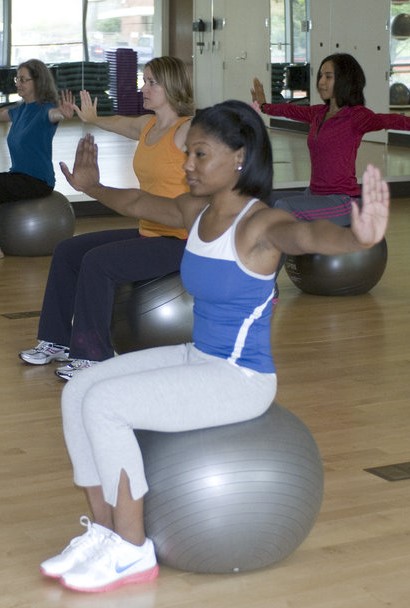
Sitting support devices such as ball chairs, on the other hand, aim to make the correct sitting posture more attractive.
Often they integrate an unstable element such as a ball, unstable bottom which makes sitting upright easier than sitting at a tilted angle.
Therefore you are going to sit more upright while working on important hip flexor muscles to maintain decent posture.
This type of chair has very little disadvantages as they don't make sitting with good posture easier, which is important as you will otherwise stop training the muscles responsible for posture.
Pros & Cons of Posture Correctors
Pros
Cons
Why Posture Is Important
But why should you even bother about sitting & standing up straight? I mean as long as you do exercise on a frequent basis posture is not going to harm you right?
Unfortunately not
Even when going to the gym or doing physical activity especially sitting with poor posture is going to make your psoas & hip flexors stiff, which you can't fix with your average running or leg workout.
Furthermore, poor posture is going to come with other health issues such as hip flexor, neck muscle weakness, which will then make your posture even worse.
It is a vicious cycle as poor posture makes good posture harder, while the only way out would be to make a good posture more attractive. This is where the fitness industry saw the possibility to create posture correctors, to fix this problem. Although as covered above a posture corrector is not the long term solution to your health problems & pain.
Besides getting stiff muscles, pain & even joint damage can happen by neglecting posture. Your entire body is connected which would be the easiest to explain with this example.
- You start a habit of having your neck tilted towards one side while sitting
- Your neck starts to get stiff & sore on one side
- You start walking with a slightly tilted head position
- Your hips start tilting with your head
- You start to experience Knee pain
Although this kind of process can be stopped with massage, stretching & exercise it is very common amongst many people.
Therefore posture plays such an important role! But what is the long term solution to fix posture?
Find out in the section below!
Better Alternatives
Right above I already scratched some of the best alternatives that you can do. But here is a list & detailed explanation on how to work on each of those problematic regions.
Work On:
- Mobility
- Flexibility
- Stability
- Strength
Working On Mobility
Before even talking about increasing mobility it is vital to understand the difference between mobility & flexibility.
There has been a lot of confusion around these two terms, which is why you can find a short definition below if you are not sure about the two terms.
- Mobility is the ability to move a joint through a range of motion actively
- Flexibility is the ability of your muscles to lengthen passively
Therefore flexibility always works with outer factors such as gravity, or an external object that you hold on to.
On the other hand, mobility would be to lift one leg as high up as you can, whereas you don't use your arms or another person to pull your leg up!
Therefore it is more complex to train mobility, also since it depends both on strength & flexibility at the same time!
But why is mobility so important?
The primary reason is that you need basic mobility in order to have proper spine alignment & to sit up straight. Poor posture & muscular dysbalances often start limiting your mobility, which makes it more exhausting to sit with good posture for a long period.
In order to make sitting & standing with the right posture easy without external devices, there is no way around working on mobility.
How do you improve your mobility?
Work on:
- Flexibility
- Stability
- Strength
Maybe you noticed that I mentioned the exact same factors above. The reason is, that mobility is a product of the factors above, which can be reduced to strength & flexibility.
Since there are so many factors that you need to keep in mind you might be thinking that it is very time-consuming to correct posture.
But in reality, it is not necessary to spend hours working on each area when doing the right exercises.
Fortunately, there are types of movements that work in multiple areas at the same time. Right below here you can find a list of the most effective exercises, that will help you to fix posture problems. Note that exercising once is not the solution to fix any muscular dysbalance since your body needs time to adapt & to develop mobility!
Before getting into the exercises you need to rethink the areas where you have stiffness. The two most common ones are.
- Hip Flexors
- Neck
Since both areas frequently are products of each other I recommend you to work on both to improve your posture effectively.
Hip Flexor Exercises
In most cases, the hip flexors are going to be the most important area to work on. One muscle is going to need special attention, which is called the psoas.
It is the only muscle that connects your upper to your lower body, which makes it responsible for any bending motion in your hips.
But Let's get into the exercises!
- Straight Leg Swings
When doing straight leg you want to be standing on one leg while the other one is going to swing. There are different angles, that we all recommend you to work on to get the most of the exercise.
- Sideways:
Stand facing a wall/object above hip height and support yourself with your hands. Stand on one leg and swing your leg from side to side. It is important to lower your leg down as slow as possible while the positive part of the motion should happen explosively.
- For & Backwards
Stand facing a wall sideways, while swinging your leg forward and backward. Focus on keeping your legs and especially your back upright. Especially while lifting your leg backwards you should avoid bending your upper body forward to get the most out of the exercise!
- At a 45 Degree Angle
This time you are going to do the exact same exercise but your leg is going to swing diagonally, which puts emphasis on another area at your hip flexors.
- Glute Bridge
The next exercise on the list is a stability & mobility exercise that can be performed nearly anywhere. Start by laying on your back, with your knees bent. Then you are going to lift your hips up towards the ceiling as far as you can while maintaining a straight back.
Try to hold this position for 3-5 seconds before slowly lowering yourself down back to the starting position.
- Walking Lunges
Walking lunges are very common among fitness enthusiasts. One key aspect I wanted to point out is that you should try to hold the position at its lowest point for 2-3 seconds and push your hips forward to additionally stretch your hip flexors.
- Standing Knee Raises
The last exercise is quite simple: stand on one leg and try to lift the other knee up as high as you can, while keeping the movement as controlled as possible.
To make the exercise harder you can stand on an elastic band with your ground foot, while the other foot is "attached" to the elastic band.
You can find more hip flexor exercises & guides on my website, which is going to help if you have more severe problems with tightness or weakness around that area.
Skim through this article for more strength exercises
Click here for more stretches for your hip flexors & psoas muscle.
Neck Exercises
- Shoulderblade Squeezes
When performing shoulderblade squeezes you are going to be sitting and standing; try to move your shoulder blades backward and towards each other as if you wanted them to touch. It is crucial to do the exercise as slow as possible to get your trapezius muscle engaged.
- Arch up
To do arch ups you start by laying on your stomach, then try to lift your legs & upper body up while only your hips remain on the ground.
Try to lock your arms in between your ears to additionally engage your trapezius, which will work on the stabilizing muscles around your neck!
- Neck Flexion Stretch
Many people already do the neck flexion stretch subconsciously. Simply use one arm to pull your head towards either side. Hold the position for roughly 20-30 seconds to stretch your trapezius.

How Much Should You Do?
It is important to keep a good balance between over & undertraining, also the intensity shouldn't be too high as you want to increase the endurance of your muscles.
Therefore you should take out 2-3 exercises and do 3 sets of each exercise. Try to get at least 30 seconds of time under tension or above 10 repetitions to gain the best results.
Also, focus on quality over quantity as proper execution with fewer reps is going to get you further than training your ego.
Conclusion
By doing the given exercises on a regular basis it is going to get more natural to sit & stand upright. Still, it is important to constantly remind yourself about posture, as it might take some time to break the habit of sitting or standing with poor posture.
Feel free to share this article if you found it helpful. If any questions remain, you can leave a comment below!
